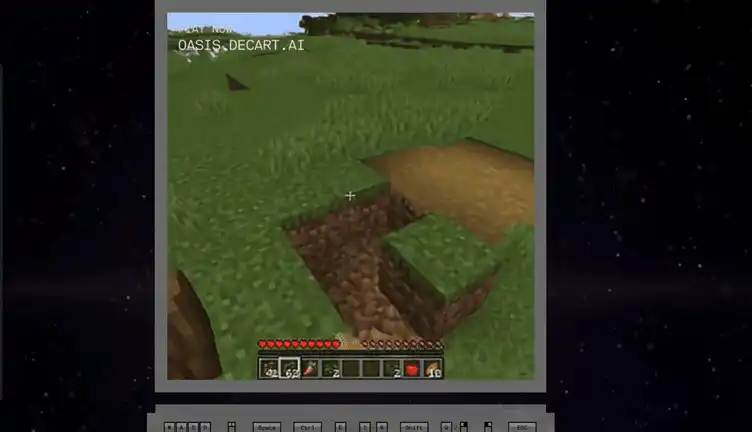A new AI model called Oasis is making headlines for generating playable versions of Minecraft-like gameplay using only images, and this innovation, developed by Decart in collaboration with Etched, offers exciting prospects for the future of video game production and interactive experiences. This innovation, developed by Decart in collaboration with Etched, offers exciting prospects for the future of video game production and interactive experiences.
Oasis has been called “the world's first real-time AI world model. Unlike traditional game engines, Oasis creates gameplay based on user input and visual data. It processes keyboard and mouse input and generates each gameplay frame on the fly at approximately 20 frames per second.
The system internally simulates physics, game rules, and graphics to enable a dynamic gaming experience that adapts to the player's manipulations.
Netflix is one of the companies actively exploring the potential of generative AI in game play, including closing its own game studio. Its goal is to “accelerate development and create novel game experiences,” which will likely be unpopular with employees laid off from the game studio.
Oasis is built on a new AI architecture that combines Vision Transformer technology with diffusion models for image processing. This setup allows the system to create frames of gameplay in real time based on user input.
The system runs at 20 frames per second with “zero latency” on a single NVIDIA H100 GPU, generating each frame in about 0.04 seconds. This is much faster than other AI video generation systems such as OpenAI's Sora and Runway Gen-3, which typically take 10-20 seconds to generate 1 second of video.
While this is all very impressive, there are still some limitations. Gameplay resembles a low-resolution and somewhat glitchy version of Minecraft, and there are issues regarding object persistence.
Additionally, the environment can change unexpectedly as the player turns, and the frame rate and visual quality are not as good as traditional games. Despite these challenges, this technology has great potential for the future.
The rise of AI-generated game experiences such as Oasis could have a significant impact on the industry. Game developers will be able to quickly create and test new gameplay ideas, and models will be able to adjust game worlds and storylines in real time based on what players prefer. Furthermore, production costs could be reduced by automating some aspects of game production.
However, using AI to create games based on existing titles raises important issues regarding copyright and creative ownership; it is not yet clear whether using gameplay footage to train AI models would infringe on game developers' intellectual property rights The role of Artificial Intelligence in game development is not yet clear. As artificial intelligence plays a greater role in game development, issues related to copyright and creative control will need to be addressed.
Although still in its early stages, Oasis is making notable progress in AI-driven game development. As the technology evolves, we can expect more complex game worlds with higher resolution, improved frame rates, and better object persistence. AI generation could also be integrated into the traditional game development process.
This is an exciting milestone at the intersection of artificial intelligence and games. While challenges remain, this technology offers a glimpse into a future where artificial intelligence will play a key role in creating personalized gaming experiences.










Comments